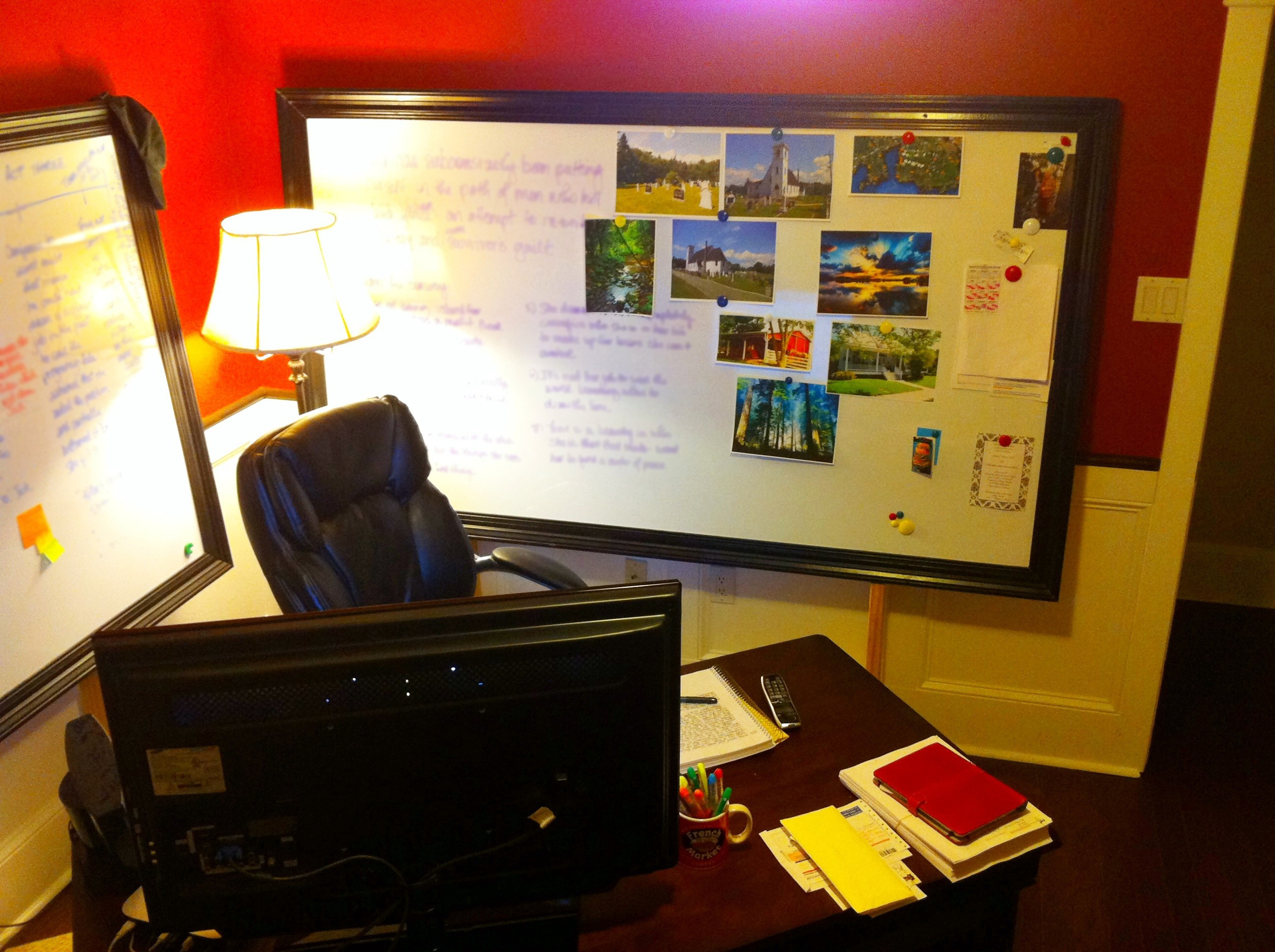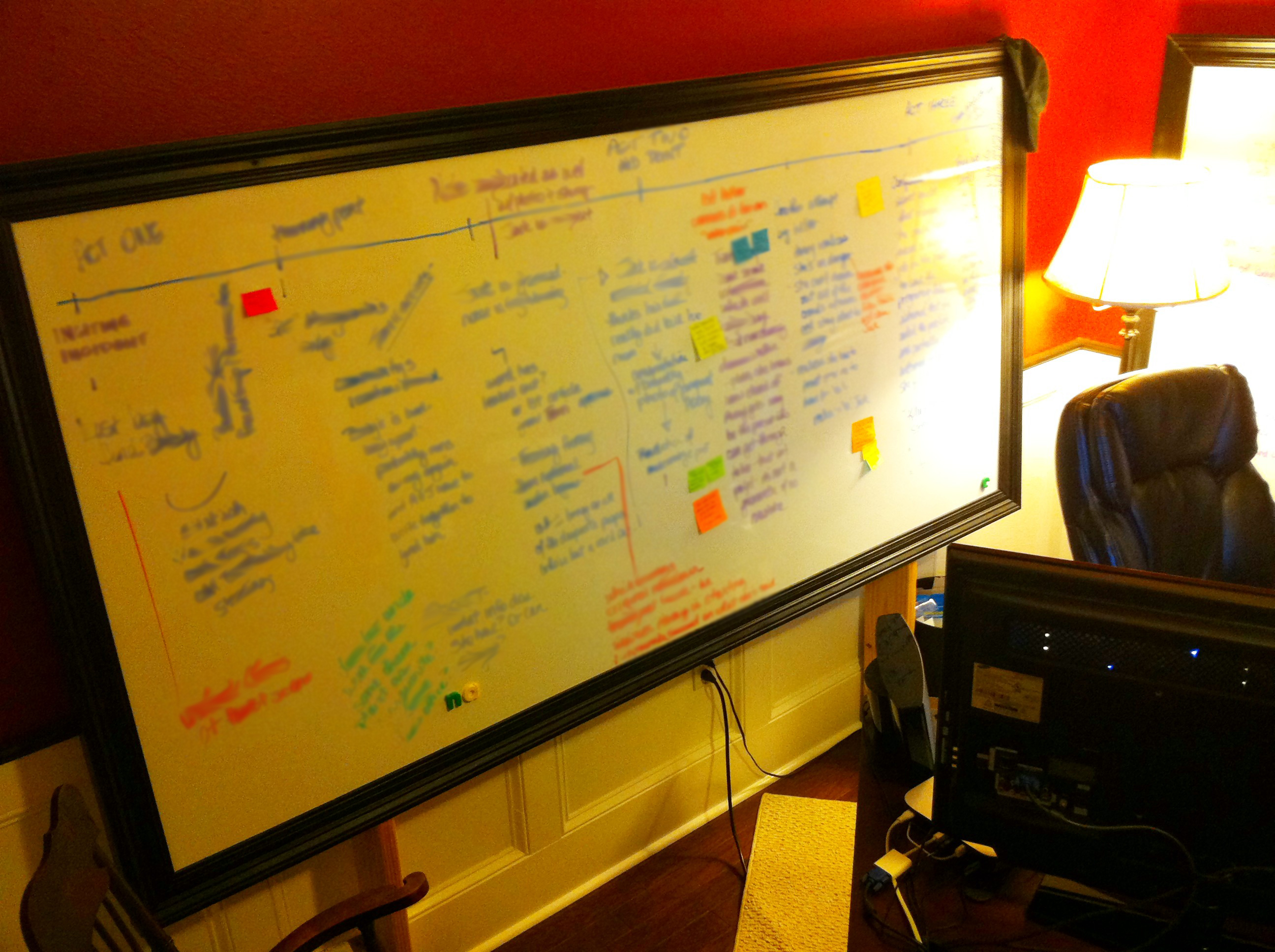What do you see?
One of the difficult things about writing is narrowing down your options to the ones that best resonate with the story you want to tell. For me, it’s much easier to write a story when I already have the field narrowed. When I have to write a blog, for example, and if I know it could be about anything, I’m almost always stumped. If I narrow the field down to writing, then that helps me focus–but even with the category of “writing” there are all sorts of sub-categories, from marketing to creativity to time management to craft. And within each of those, more nesting categories. It’s a matter of choosing a subject and then refining, drilling down until I find the one specific point that resonates with my mood the day I’m writing the blog and then plucking that idea out, and examining it from as many sides as I can.
It’s also the same thing with life. You have so many choices every day–from simple things like “Will I apply for that job?” to “Will I have patience with the idiot co-worker or go postal?” to “Will I pursue my dream?” Each one of those choices then beget more… and if you focus on the totality of all of the choices, you’re very likely going to be paralyzed. You have to take the project–any project–step-by-step.
Fiction’s no different. You have to look at each set of choices you’re making and think about how they’re going to help you throughout the story. Do you want to do first person POV? Or multiple third person POVs? What type of story do you want to tell? What sort of tone fits that story? What sort of characters fit that tone? What sort of setting and premise fit those characters? What sort of ambience and socio-economic backgrounds fit that setting and premise? Etc… drilling down until you find the details that illuminate your original inspiration / goal.
This is where voice comes in–it’s your take on those choices that ultimately define your voice. It’s showing the world how YOU see the story, and giving us a slant on that that makes it uniquely yours. Which will make it memorable.
Instead of using a writing example to show you what I mean, let me jump into a different arena and use a couple of examples.
When I had the idea for this blog, I grabbed a couple of photos I’d taken, and I decided to show you the “before” image and the “after” results once I’d noodled with it in Lightroom. (I also have Photoshop, but for the purpose of these photos, Lightroom did enough of what I wanted, fast enough. If I were going to print and frame these photos, I’d pull each of them into Photoshop and clone out some of the flaws until I had it exactly as I wanted it… i.e., a “final polish”.)
I want to walk you through this process, because it’s going to show my voice and my editing process (same as I use for writing, in a lot of ways).
When I was vacationing in Moab, Utah last year with our oldest son, Luke, and my fabulous daughter-in-law, Amanda, I was experimenting with my camera, and I had a goal of getting some shots that I could play with for dramatic effect.
That right there is the first level of writing: the area was narrowed down: Moab. The tone: artistic–something that I could show off certain ideas I had in my head. So that eliminates me selecting for this exercise all sorts of candid shots of people. As I sifted through dozens of images, I had an idea of what I wanted to play with that would further my goal of an artistic take on a subject. This means eliminating shots that were perfectly good, but which didn’t have an angle or lighting or a detail that I could emphasize.
Okay, let me show you. Here’s the first shot that caught my eye of the ones I took. Now this is straight out of the camera, untouched. It’s a lazy shot–I didn’t bother to stop to get a good light read on the leaves, nor did I bother to frame the shot much. I knew, though, when I saw the leaves originally that I would end up turning the photo in a different direction from the image and playing with it in black and white and cropping it.
It started here:
It’s kinda boring, huh? But when I was walking by those leaves, I didn’t see what’s in that photo up there. I saw this (click on the image to see it in better detail):
The first photo is an example of writing that’s decent, serviceable. The second is voice: I not only converted it to a black and white, I boosted the contrast, the highlights and lowlights, the exposure, and futzed with things like luminescence to gain that “painting” quality. I then framed it tightly. In the first photo, there’s a little fluidity to the leaves, but we’ve got too much backstory around it: the wall of mud, the other leaves, the other sticks, and the dull, monochromatic color. By tightening in on the fluidity of the curves, I tell a story here: something dying can be beautiful, too. I love the almost lace-like quality of that bottom leaf, and I could’ve zeroed in on just that one detail, but I’d have lost the movement this image now has.
A lot of times, writers are afraid that readers won’t “get” the whole idea if we don’t lay out every single piece of information for them in one big information dump. But by giving so much, we render the overall “image” stagnant. There’s this resistance to getting in tight in a scene–a resistance to trusting that the reader will “get” the big picture. Often, it’s too easy to forget that you’re not going to just have that one scene. You’re going to have dozens of them, and if you’re giving us just the information that we need right then, we’ll “get” what we’re looking at, but we’ll also “get” the overall idea as you string a series of those tight images together. I could do an entire series right here on these kinds of details.
A second example I wanted to show you is one where what we see is not what I want you to focus on in the original. Here’s one of the arches in the National Park there in Moab:
Again, kinda boring. I was in a hurry at this point, and tired. I remember thinking about what I’d do with this image, and I took several quick shots. I should’ve metered better for the lighting, but I was starting to lose the sun. Here’s what I ended up with, after playing with it for about five minutes (again, click to see better detail):
That’s the same image, but the second one has drama. It’s going to grab your eye much better than the original, and you’re going to focus on that contrast between the sky and the mountains, whether you knew that’s where I intended to force your eye or not. By converting it into black and white and adding some sepia tones, I was able to get a lot more detail out of the rock face, and more contrast and boosting of the blacks in the photo gave me that effect with the sky.
So if you have a scene that you know is just sort of there, doing its job, looking decent, but it doesn’t feel like it’s grabbing the reader (and if it’s not grabbing you, it’s very likely it’s not going to grab them), then ask yourself, “What’s my vision here? Where do I want them to focus?” I took several shots of that arch above from different angles, but this one had the rockface in the forefront pointing to the sky and so I chose this angle to manipulate. Then I started playing with the colors, with converting it, playing with the contrasts, until the photo started telling you the story I wanted you to see.
In a scene, I’ll do the same thing–I’ll have a scene that’s functioning okay, but it’s too easy for my eyes to pass over it. I want you engaged in what you’re reading–or seeing–and to do that, I’ve got to think of ways of bringing out the details that create a vivid mental image for you. I ask myself, what’s the conflict here? (contrast) What do I want to highlight? What is the emotional response I want to have in the reader at the end of this scene? Do I need the reader to be close in on the detail, or pulled back for the perspective?
Imagery inspires me. If I were to do a final pass on these two images to make them into something that I actually liked enough to frame, I’d pull the top b&w leaf one into photoshop and I’d clone out that bottom stick that protrudes up into the lacy-leaf area. I’d probably futz a bit more with the contrast and texture, and I might add some actual textural overlays onto it to see how they looked (giving it more of an antique feel). On the bottom one, I’d pull it into photoshop and isolate the sky and then increase the contrast just in the sky without screwing with the rocks… so that there was a bit more of that lovely contrasty-sky feel to the piece. Or maybe not. I’m not sure–which is what happens sometimes in the final draft–I’ll put things in, decide they don’t help, and take them back out.
I love editing. I’m a far better editor than I am a writer–or a photographer, for that matter. It’s where I get to refine the choices I made, or throw them out and start with something else.
Imagery inspires me. I love photography for this reason, because it interlaces with how I see the world and informs how I write.
What inspires you? No matter what field you’re in, what is it in your life that inspires you to look at your world with a clearer eye? A happier eye?











